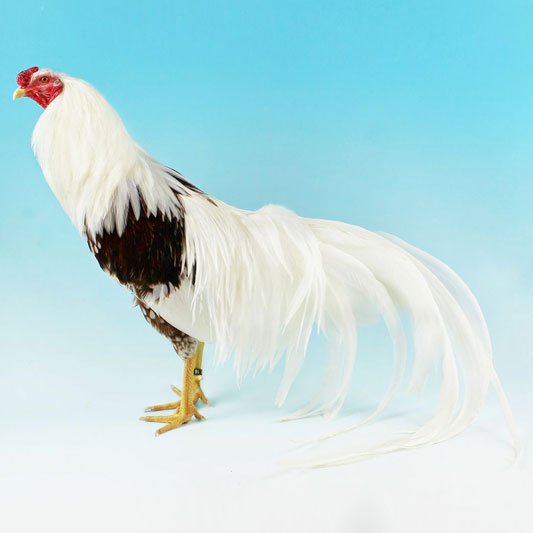The earliest recorded long-tailed fowls were found in China and sent home by Japanese diplomatic representatives. This was sometime between AD 600 and 800 in our calendar. Not all accounts agree about dates and details of events so long ago. The original type birds were called Shokoku in Japan, and from them were developed several other Japanese longtailed breeds, which are summarised at the end of this Standard. Several of these Japanese long-tailed breeds were exported to Europe, the first recorded by M. Girard, a French missionary, in 1864. These and later shipments were consigned from the port of Yokohama, which became the name by which all long-tailed fowls were called by Europeans who were not able, or did not bother, to discover the true breed names and details from Japanese experts. A leading German fancier, Hugo du Roi, bred and promoted the red lobed and, somewhat gamey, red saddled white Yokohama (circa 1880), but it is not clear if he made them himself by crossing various imports or actually imported birds of this colour and type. This variety is unknown in Japan now, but might have existed then. In an effort to bring some order to their assortment of imported types, German fanciers restricted the name Yokohama to the red saddled whites, and invented a new name, Phoenix, for the white lobed, single combed type. British fanciers formed a Yokohama Club about 1904 and decided to use that name for all types; which is why we now have one very long and complex Standard for what really should be several breeds. Yokohama bantams were made by various German fanciers by crossing large Yokohamas with assorted bantams of appropriate colours.




